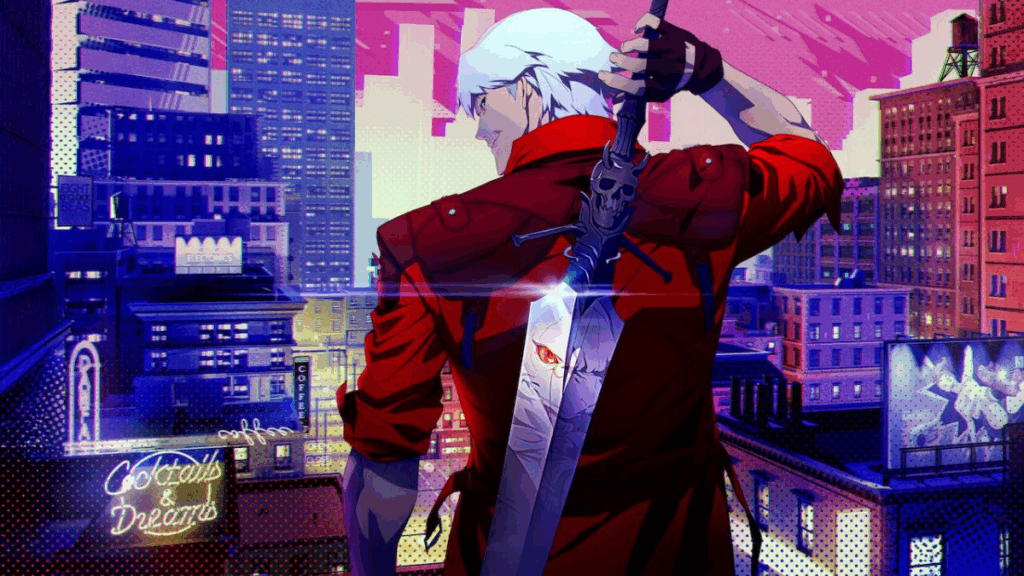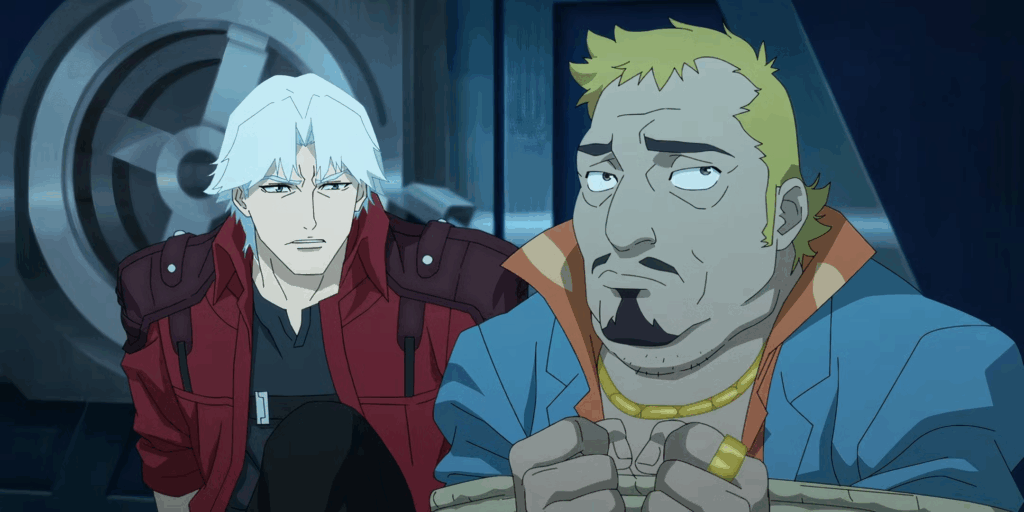Overview
Devil May Cry, a game series well-known for its fast-paced, stylish and technical gameplay, head-banging music, witty humor and surprisingly deep narratives, the name has become synonymous among the internet for a niche little community of wacky, stylish gamers and a multitude of memes regarding plastic chairs.

But above all else, is a fandom which is dedicated and loyal to the depiction of their beloved franchise. After the controversial 2013 reboot, which saw many narrative, gameplay, character and environmental alterations, coupled with a few in-game jokes that felt distasteful to the original game’s legacy, many fans were skeptical about an anime adaptation of the series and how it would have held up in preserving the legacy and heart of the games.
Despite this, the first season was a relatively exciting watch, the animation was immaculate, with stunning visuals and amazingly choreographed fight scenes. The music was amazing, reviving early 2000s edgy culture with touches of nu-metal and alternative rock, featuring iconic artists such as Evanescence and Limp Bizkit in the soundtrack.

Furthermore, the story was compelling, introducing a new twist as an alternative take on the famed demon hunter, Dante. A charismatic demon hunter who takes it upon himself to slay demons to protect humanity. He faces conflict not only through the antagonist but also his own identity being half-demon, and as both humanity and hell both show their faults, he must wonder what side he is truly on.
With a combination like that, it was no wonder that it was a relatively well-received adaptation. On a blind run without much knowledge of the series, it is a fun and enjoyable watch. However, there were a few glaring issues that stopped me from fully loving it.
Where is Dante?
Despite having the most screentime out of the entire cast, clocking in at around 61 minutes and 35 seconds, it feels that his importance to the story and the plot feel underutilised and insignificant, despite being the main protagonist of the show. In fact, he feels more as a supporting character and plot device, conveniently thrown into the narrative whenever they need him, rather than integrating him as a character.
It felt as if he was less explored in terms of his character and narrative arc, rushing through significant events seen in the games as if the show wanted to ‘get it over with’ to move on with the rest of the story. Furthermore, throughout the series, rarely does he get the time to shine and stand out, often being out of commission, incapacitated or captured while the rest of the cast proceed the plot.
While the fights and action that he is involved in are exceptional, with fast-paced and high-stake battles and formidable foes, rarely does it feel as if it had any significant weight regarding progression or significance to the narrative.
Dante rarely gains any substance of development until the very end, where he is responsible for defeating the main villain once and for all. But that is one of the few times he does get the spotlight, and in most cases, he finds himself unaware of any of the plot occurring or completely being left out entirely.

His arc and importance seem to have been replaced by what is considered the “true” protagonist of the anime, Lady, with relatively mixed reception regarding her depiction.
Lady May Cry
Lady has always found herself as a fan-favourite deuteragonist of the Devil May Cry series, as a fierce and aggressive gun-toting femme fatale, being able to keep up with Dante’s demonic shenanigans despite being only human. But what made her so interesting was her ability to sympathise and understand the other side in a sensitive and compassionate manner, showing arcs of redemption from absolute morality to understanding the ambiguous complexities of good and evil (or in this case, human and devil).

However, Lady in the Netflix adaption seemed to have taken a step in an unwanted direction by fans, becoming less sympathetic and flavouring her vocabulary with f-bombs every one to two lines.
Throughout the show, she often acts on impulse, rushing in head-first into danger regardless of the consequences to herself or the people around her, and often acts unreasonably rude, aloof or insensitive to anyone she does not consider a human (Especially Dante).
Despite this, the show is seen exploring her character much more dedicated and deeply compared to the main character, with Episode 6 being a twenty-four minute exposition of her backstory and how it parallels with the main villain. Additionally, major story plotlines are advanced by her, sidelining Dante as the main protagonist in his own show in favour of Lady taking the reins and advancing the narrative without him.
At some point, I wondered if the promotional images were lying to me into believing Dante was really the main protagonist, because it felt more like the Lady show than anything.
Final Thoughts
The Devil May Cry anime is a fun but flawed watch throughout the season, that newcomers to the franchise will find to be enjoyable both narratively, visually and aurally. However, flaws regarding characterization and misuse of plot significance kept it from being truly a great series.